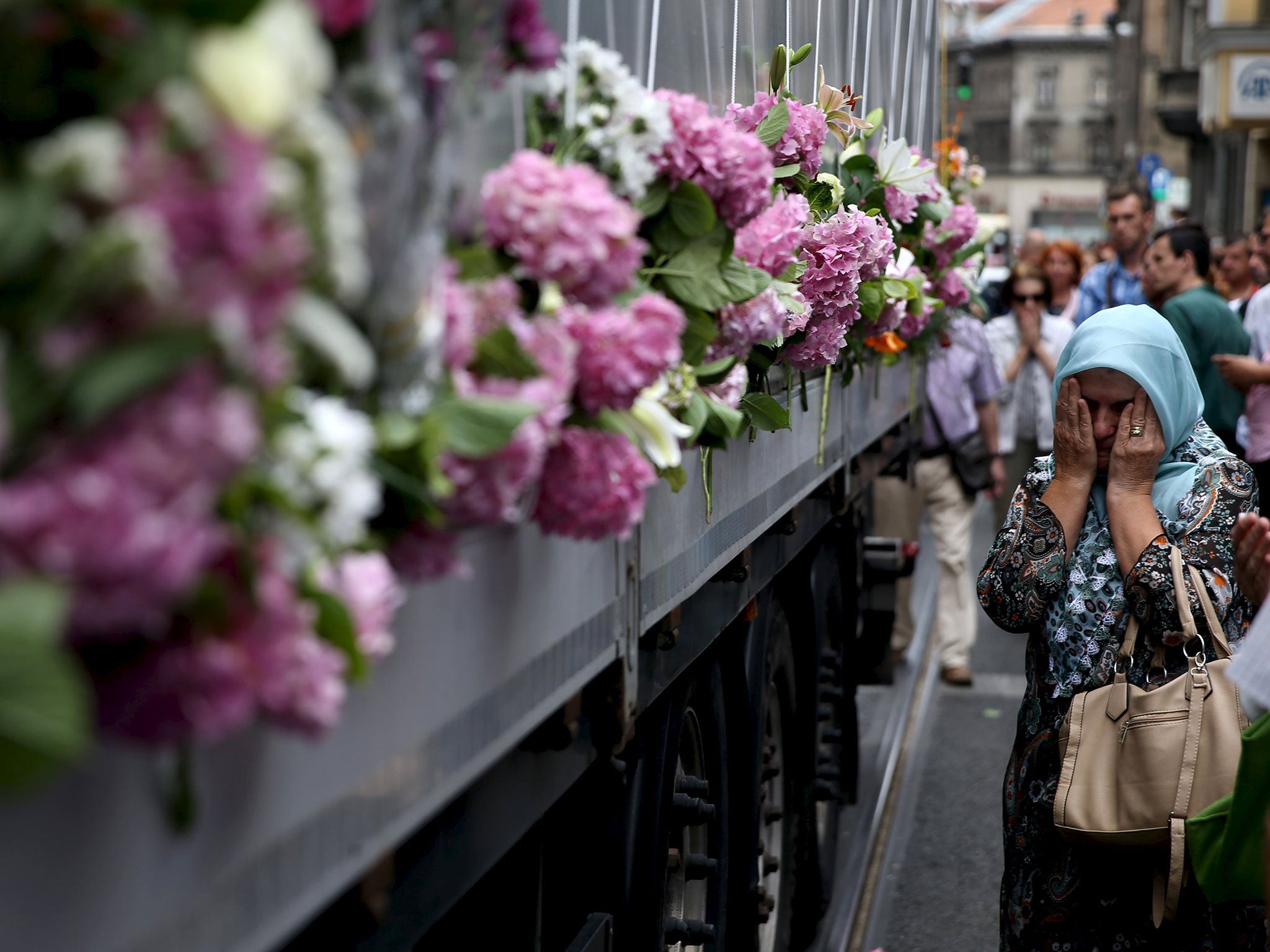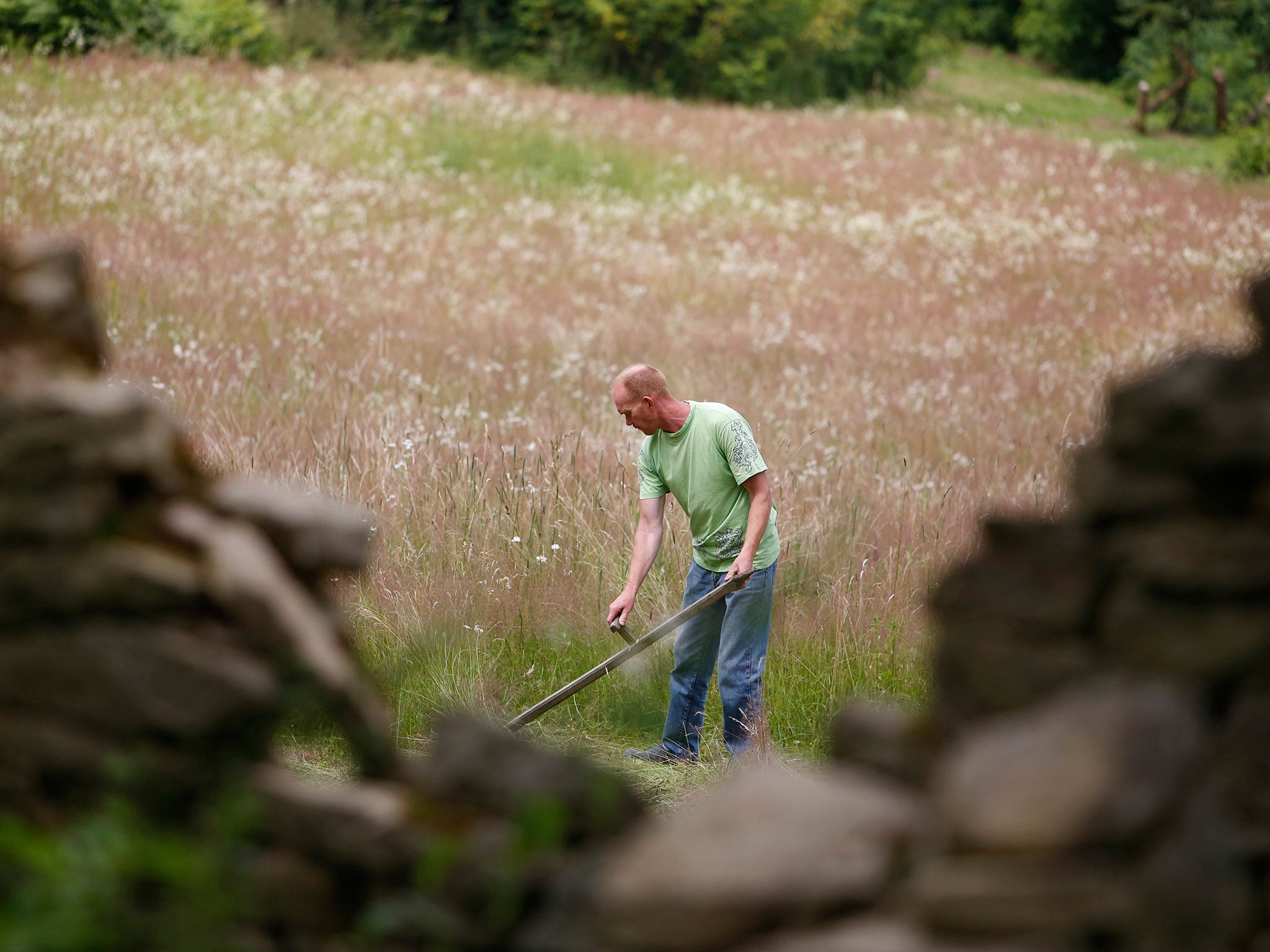Srebrenica 20 years after the genocide: The Dutch peacekeepers still haunted by memories of the massacre
In July 1995 a UN battalion watched on, outgunned and outnumbered, as 8,000 Muslim men and boys were slaughtered in a Bosnian town. Mike Corder and Amer Cohadzic meet two soldiers whose lives were changed by the event

Your support helps us to tell the story
From reproductive rights to climate change to Big Tech, The Independent is on the ground when the story is developing. Whether it's investigating the financials of Elon Musk's pro-Trump PAC or producing our latest documentary, 'The A Word', which shines a light on the American women fighting for reproductive rights, we know how important it is to parse out the facts from the messaging.
At such a critical moment in US history, we need reporters on the ground. Your donation allows us to keep sending journalists to speak to both sides of the story.
The Independent is trusted by Americans across the entire political spectrum. And unlike many other quality news outlets, we choose not to lock Americans out of our reporting and analysis with paywalls. We believe quality journalism should be available to everyone, paid for by those who can afford it.
Your support makes all the difference.Rob Zomer has heard the comments many times over: You’re cowards, killers. How could you stand there and do nothing?
Insults like this only add to the mental injuries he suffered 20 years ago, when he was part of a vastly outgunned and outnumbered Dutch battalion of United Nations peacekeepers who failed to halt the slaughter by Bosnian Serb forces of some 8,000 Muslim men and boys in Srebrenica, eastern Bosnia.
“When you hear – for 20 years now – only about bad things that you do,” said Mr Zomer, “that makes you stressed, crazy.”
Mr Zomer is quick to acknowledge that the main victims of what is believed to be the worst massacre on European soil since the Second World War are the mothers, wives and daughters of Srebrenica, who lost their men and boys in July 1995. But the lives of the small contingent of lightly armed Dutch troops who were powerless to intervene also changed forever. Many suffer post-traumatic stress disorder, and some have taken their own lives.
The Srebrenica massacre also had a profound effect on the Dutch nation. The government resigned seven years later after a damning report criticised authorities for failing to adequately prepare, arm and support the troops, sending them to Bosnia with a vague mandate to protect lives but seemingly insufficient weaponry to shield civilians from Bosnian Serb forces led by General Ratko Mladic.
Now, as a result of what happened in Srebrenica, this nation that prides itself on a long history of contributing to international peacekeeping efforts makes sure its servicemen and women are ready no just to protect local populations, but also themselves when they are sent overseas.
Dutch troops sent to serve in the international force in Afghanistan were sent with plenty of military hardware and a robust mandate.
“They had big weapons, big armoured personnel carriers, they had helicopters, they had close air support — F16s, Apaches (helicopter gunships),” said Denis Waan, a former Srebrenica peacekeeper who has also suffered trauma.

The lack of air power was key to the failure of the UN peacekeeping force in Srebrenica. The Dutch commander repeatedly called in vain for air backup as Serb troops bore down on the enclave. In the end, only one Serb tank was hit by an air attack carried out by two American and two Dutch planes, said Joris Voorhoeve, the Dutch Defence Minister at the time.
Mr Voorhoeve said a contributing factor was an agreement between major powers not to use air strikes against Serb forces because it could endanger peacekeepers being held by Mladic.
“We could have bought time by earlier, stronger application of air force,” Mr Voorhoeve said.
He added it would not have saved the enclave, but could have given the UN a window to evacuate the population.
Instead, Mladic summoned scores of buses and separated men and boys from women as they were loaded on board. “The buses with the males went in a different direction and we know the horrible effects,” Mr Voorhoeve said.
Both Mr Waan and Mr Zomer still struggle with the after-effects of their roles in Srebrenica. Neither managed to hold down a job after leaving the military.
Mr Waan joined the police in the Netherlands but had to leave due to stress-related complaints. Mr Zomer became a locksmith but wound up quitting the job and the country.
However, instead of running from the Srebrenica phantoms haunting him, Mr Zomer went back and confronted them. He now lives in a house he built himself overlooking the undulating hills and forests of Srebrenica. He spends his summer days tending his small herd of goats, cutting the grass with a scythe and making hay.
He still has horrific memories of doing what little he could to help Srebrenica’s terrified population as Mladic’s Bosnian Serb forces bore down on the enclave.
Mr Zomer recalls a young mother pressing a baby into his arms. He carried the infant to a Dutch field hospital, but medics there were unable to save the child. Mr Zomer was forced to bury the baby himself.
Years later, the mother found the remains of her child and buried them in a cemetery in Srebrenica reserved for victims of the genocide. He said he hopes the baby’s mother one day hears that, “I put her baby in the ground with a lot of respect,” Mr Zomer said.
Now, he helps other veterans deal with their traumas. Dozens have dropped in since he moved to Srebrenica three years ago. They come to revisit places of horror etched into their memories by the events of July 1995.
Mr Zomer hopes they leave with new memories. He takes his former brothers in arms to places where they served as peacekeepers. There, they build a fire, grill some meat and talk.
“First you’re thinking of that place only (in terms of) stress,” he said. After a barbecue on a summer evening, “then you have another mindset.”
Some local residents, however, don’t appreciate Zomer’s decision to move to Srebrenica, where survivors still blame Dutch troops for not doing enough to protect the enclave’s men. He said that mothers of victims of the genocide still won’t shake his hand if they are invited to memorial events to mark the massacre.
Mr Waan has been back to Bosnia repeatedly and says he has made friends there. “They said to me, ‘Dennis, you also have to continue your life. You can’t stay in 1995.”’
Final journey: 136 more victims
Thousands have lined Sarajevo’s main street as a huge truck bearing 136 coffins passed on its way to Srebrenica, where newly-identified victims of the massacre will be buried on Saturday. As the truck rolled down the street covered with rose petals, the sobbing of the victims’ relatives pierced the air.
International courts have labelled the massacre, in which some 8,000 died, as an act of genocide. So far 7,000 bodies have been retrieved from 93 graves or 314 on-surface locations.
Remains are still being found in mass graves, and among the 136 newly-found victims to be laid to rest are 18 minors. The oldest, Jusuf Smajlovic, was 75 when he was executed. He will be laid to rest together with his 29-year-old grandson, Hebib.
AP
Some names have been changed
Join our commenting forum
Join thought-provoking conversations, follow other Independent readers and see their replies
Comments